In 2008, Usain Bolt obtained the title as the world’s fastest sprinter, after years of training and dedication to the sport, focusing on utilising his strength and power in short bursts of energy.

Fig 1. Usain Bolt – the man who likes high intensity training (HIT) and wins world titles.
Now, there is a whole workout dedicated to using this training technique, called high intensity training, or HIT.
An elite personal trainer in London near you can help you achieve your weight loss goals using HIT and other fitness strategies by using a personalised to your body transformation program.
By understanding how our energy systems work and knowing how to use them efficiently boosts your exercise performance, and can allow you to achieve even your most bold health and fitness goals. It may not be simple, but it does provide maximum results.
An introduction to High-Intensity Training (HIT). Can a personal trainer near me provide these benefits?
The concept of high intensity training became popular in the 1970s by a man named Arthur Jones, who invented Nautilus, many in-home exercise machines and is known as a leader in exercise physiology [6].
His idea of training was focused on executing quality repetitions through weight training until complete muscle fatigue [8].
The variables that composed the training were the number of repetitions, amount of weight, and length of time until muscular failure. In other words, the HIT exercises were to be brief, infrequent, and very intense.

Fig 2. When implemented correctly ropes training could add a massive metabolic twist to your conditioning.
When exercises of high intensity are performed, they increase both muscle strength and size, when compared to exercises of more repetitions and less weight.
Other benefits include increased results of weight loss, increased VO2 max (our body’s utilization of oxygen), and improved mood [12].
How does our body utilize energy when we perform HIT exercises? If you want to know how to lose weight fast, you’ll need to understand this!
Throughout our lives, we participate in very intense exercise, low-intensity workouts, and periods of rest.
Our bodies have individual energy systems for each of these tasks that allow us to complete the workload we ask of it.
Utilizing these systems in a strategic way allows us to discover how to lose weight fast, how to see weight gains, and experience total body transformation.
A personal trainer in London can help you determine the best way your body needs to activate and use efficiently each energy system.
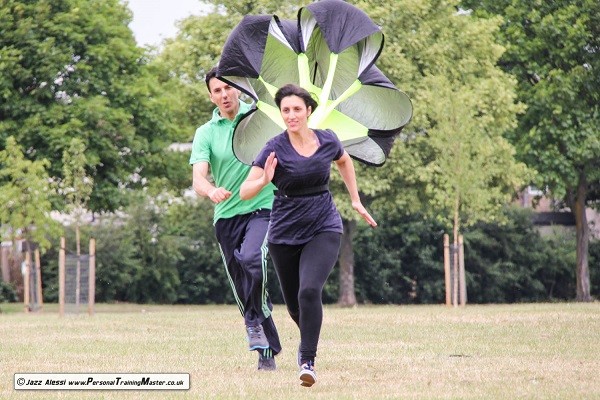
Fig 3. Jazz Alessi – elite personal trainer in London trains a client for London marathon.
Understanding these energy systems is a great way to gain knowledge on what happens at the physiological level, which is important to help you achieve your fitness goals.
Stage 1: Phosphocreatine
If I asked you to go out and sprint for 10-15 seconds, your body would first use a fuel source called Phosphocreatine.
Phosphocreatine appears naturally within the body, and is stored in the muscle cells [21].
When we need an immediate burst of power and force, our bodies first rely this phosphocreatine combined with adenosine triphosphate (ATP) [3].

Fig 4. A tiger, feline attitude to sprint training could help you compete with Bolt Usain.
This system mostly engages our type II (also called fast twitch) muscle fibers, allowing for full-force power.
Stage 2: Anaerobic Glycolysis and Lactic Acid
After you sprint for about 15 seconds, the phosphocreatine supply begins to run out.
Then, our bodies migrate towards our secondary fuel source, called anaerobic glycolysis.
If I asked you to run for two minutes, as fast as possible, you would be utilizing this system.
Here, our bodies use glucose (stored in the blood) or glycogen (stored in the muscle and liver) to create ATP without the presence of oxygen [20].
With glucose, 2 ATP are generated, and with glycogen, 3 ATP are created [5].
Lactic acid is the product of this energy system, which, as it accumulates, reduces the production of new ATP.
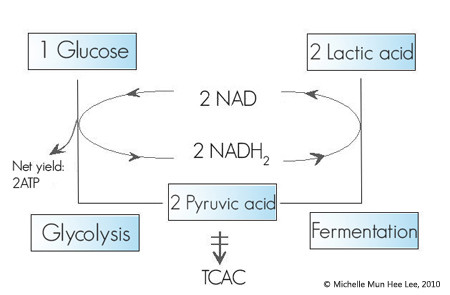
Fig 5. The anaerobic glycolysis and lactic acid mediation process can be trained for optimum performance.
Professional athletes, like Usain Bolt, may be able to maintain this stage of exercise for up to 10 minutes, whereas those who are sedentary may be able to hold this for only 60-100 seconds [14].
Cardiovascular measurements, like VO2max are greatly improved as this energy system is practiced, which leads to many health benefits as we age [16].
Individualized personal training for men can help increase this period of time, while personal training for women can help increase the efficiency of this system [18].
What about oxygen?
Both of these energy systems listed above work without oxygen, meaning they are used when our lungs simply cannot keep up with the task of providing oxygen to the muscles.
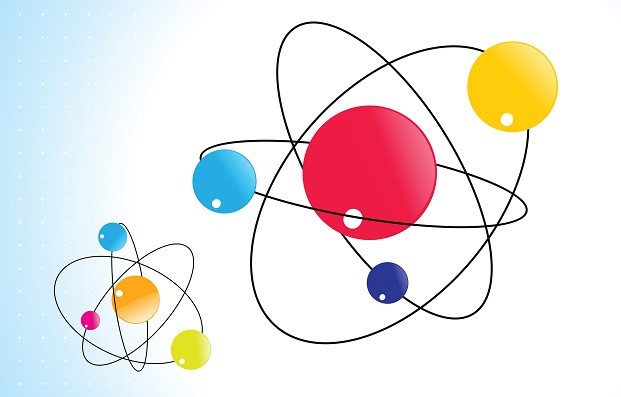
An additional energy source does exist that uses the oxygen from our breath, which is why increased breathing rates are observed during a workout.
This is where our final energy system comes into action.
Stage 3: Aerobic Metabolism
Our third energy system is called aerobic metabolism. This system is utilized when our lungs are able to produce enough oxygen to break down carbohydrates and fats for energy.
This energy system is efficient and productive, but does not allow your body to work at its optimal power if you want to maximise your sprinting performance, but instead for low-moderate intensity exercises such as walking, jogging, low-intensity biking, marathon running etc. [10].
So, as you can see, there is sort of a trade off with each of these systems of power for efficiency.
Why HIT exercises combine the best of both types of energy systems
What if we could get both the benefits of power in the less efficient energy system with lower power in the most efficient system?
Well, completing a HIT workout session is the exact answer you’re looking for.
With HIT, you alternate exercise bouts of lower intensity (such as jogging) with very high, intense bouts of exercise (sprinting, lifting weights, squats with ball thrown etc.) although one must be very careful with the preparation stage and techniques used as HIT makes you prone to high injury risks.
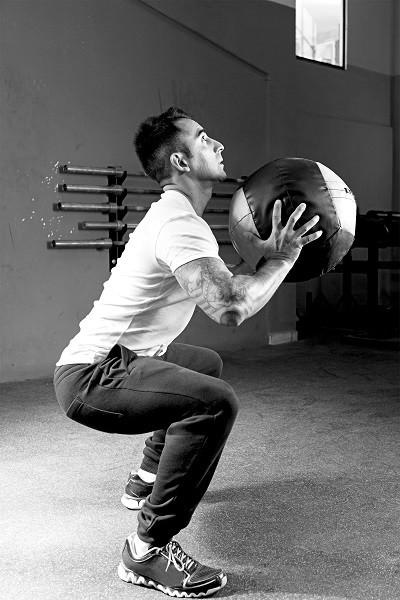
Fig 6. Medicinal balls can condition your arms and mid section but, adding a squat or a jump squat will take your metabolic workout to another level.
The intense exercise utilizes both stage 1 and stage 2 (as listed above) energy systems, which is effective for fast weight loss and overall body conditioning.
The lower intensity bouts provide some recovery between the high intensity bouts, and still engage the aerobic metabolism [20].
These training sessions have shown huge success for professional athletes, allowing them to take their game to the nest level [13].
One study shows that a 45-minute vigorous exercise bout increases metabolic rate for 14 hours, meaning you’re still burning fat long after the workout is complete [9].
However, depending on intensity and duration, the fat burning effect could last up to 30 – 40 hours.
This association of an elevation in metabolism is referred to as the excess post-exercise oxygen consumption (EPOC) [11].
How can I do HIT and what exercises are included?
Contacting a personal trainer in London who is educated and knowledgeable is a great place to begin to efficiently HIT your goals.
They will be able to guide you through the steps of learning so you are able to, one day, do these exercises efficiently and safely on your own.
High intensity exercises cause the body to go into a state of a physical activity “crisis” through the autonomic nervous system [1].
Oxygen supply is limited, body temperature is increased, fuel storages are reduced, and actually, the tissue is “damaged”.
A high intensity workout stresses the body; therefore, it is forced to adapt.

Fig 7. HIT helps you develop a lean, toned strong upper and lower body.
When high intensity workouts are thought of, sprinting, or running away from a tiger almost always come to mind and, achieving your fitness, mindset and health goals gives you an awesome feeling.
Strength, power, and hypertrophy (increase in the size of muscle fibers) are all benefits of including sprint work into your HIT [19,22].
Other types of high intensity exercises include rowing, squat jumps, and other types of rapid-speed movements.
Personal training for men may include more muscle-building activities, while personal training for women may provide exercises to maximize weight loss fast or muscle tone [17].
The incorporation of different types of exercises also increases the body’s ability to shed weight.
Alternating the body’s energy systems greatly increases your metabolism, so weight loss and body transformation goals are easily achievable.
Do you sometimes experience symptoms of depression? HIT is the perfect solution to your struggles.
If you notice that you regularly experience anxiety, guilt, sadness, insomnia, fatigue, or lack of concentration, you may have mild to severe depression.

Fig 8. Lack of structured exercise, customised nutrition and imbalanced lifestyle might lead to burnout, anxiety and even depression.
If you’re having these depression symptoms, it may be difficult to know where to begin to get on track with a healthy recovery.
Luckily, HIT has several scientifically proven studies that show its effects of reducing the occurrence of depression [13].
One study stated that all of the groups included in the study improved in positive affect and well-being only 15 minutes after HIT [7].

Fig 9. Focusing on your HIT goals with a smartly balanced lifestyle helps you to a large extent rebalance your body biochemistry.
Another study concluded that strength gain was directly associated with reduction in depressive symptoms [15].
Injury prevention and HIT: This is crucial information
One of the most important factors of high intensity training is injury avoidance.
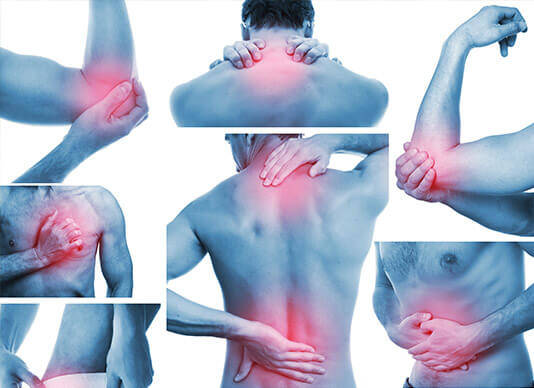
Fig 10. As much as HIT provides you with tones of benefits you just need to be aware it also carries a high injury risks.
An injury rehabilitation coach and a weight loss personal trainer in London can guide you to prevent injuries and ensure you stay 100% safe before, throughout, and after high intensity workouts [2].
Correct posture, movements and proper movement mechanics are enforced when an elite personal trainer leads the workout.
Additionally, an expert trainer who routinely incorporates core and back rehabilitation Pilates exercises in his clients programmes will provide you with an added recovery bonus.
Both a thorough warm up and cool down should be practiced, and the mechanics of Pilates enable correct body segments and correct alignment of the spine [21], greatly reducing injury risk [4].
Muscle tension is likely to increase during HIT, but only 10-20 minutes of Pilates can put back your joints and muscle into correct alignment and balance and reinforce proper movement mechanics.
To Conclude…
To summarize, high intensity training can provide benefits such as weight loss, cardiovascular system strength increases, fat and carbohydrate oxidation in the skeletal muscles, mental toughness, and an increase in muscle size.
If you’re looking to achieve your results like Usain Bolt, HIT develops many aspects of the human body, allowing it to reach its maximum potential.
Finding a “personal trainer near me” in London that encourages you to experience a body transformation program by using HIT could provide life changing results, and allow you to conquer that long dreamed-of fitness goal.
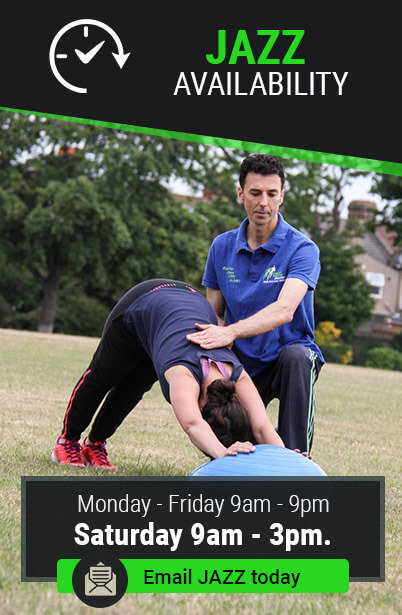
Fig 11. Are you searching online for a personal trainer near me and are keen to get started ? Contact Jazz now and train at your London location.
References
- Arto J. Hautala, Antti M. Kiviniemi, Mikko P. Tulppo. Individual responses to aerobic exercise: The role of the autonomic nervous system. Department of Exercise and Medical Physiology.
- Besier TF, Lloyd DG, Ackland TR. Muscle activation strategies at the knee during running and cutting maneuvers. Med Sci Sports Exerc 2003;35(1):119-27.
- Bogdanis, M. E. Nevill, L. H. Boobis, et al. Contribution of phosphocreatine and aerobic metabolism to energy supply during repeated sprint exercise.
- Dalleck, L. Training Recovery: The Most Important Component of Your Clients’ Exercise Programs.
- Donatelli, R. Sports-specific Rehabilitation. Elsevier Health Sciences, Oct 11, 2006
- Hatfield, Frederick C. “Is High Intensity Training Best?”. Dr. Weitz Chiropractic and Rehabilitation.
- Heggelund J, Kleppe KD, Morken G. High aerobic intensity training and psychological States in patients with depression or schizophrenia. Front Psychiatry. 2014 Oct 30;5:148.
- Johnston, Brian. “An Interview with Arthur Jones” (PDF). The Arthur Jones Collection.
- Knab AM, Shanely A, Corbin KD, Jin F, Sha W, Neiman DC. A 45-minute vigorous exercise bout increases metabolic rate for 14 hours. Medicine and Science in Sports and Exercise, 2011;43:1643-1648.
- Kravitz L, et al. What happens during anaerobic training, and how can personal trainers best implement this type of program with clients?03/04/2014
- LaForgia J, Withers RT, Gore CJ. Effects of exercise intensity and duration on the excess post-exercise oxygen consumption. Journal of Sports Science, 2006;12:1247- 1264.
- Little J, Doug McGuff. Body by Science: A Research-Based Program for Strength Training, Body Building, and Complete Fitness in 12 Minutes a Week.
- Naimo MA, de Souza EO, Wilson JM, et al. High-intensity interval training has positive effects on performance in ice hockey players. Int J Sports Med. 2015 Jan;36(1):61-6.
- Paolucci, Heisz. Examining the effects of hiit exercise on depressive symptoms and inflammation in university students.
- Shahidi, F. Effectuation to adaptation of HIIT Training. Volume 23, Number 151 (1-2017).
- Singh NA, Stavrinos TM, Scarbek Y. A randomized controlled trial of high versus low intensity weight training versus general practitioner care for clinical depression in older adults. J Gerontol A Biol Sci Med Sci. 2005 Jun;60(6):768-76.
- Tabata I, Nishimura K, Kouzaki M, et al. Effects of moderate-intensity endurance and high-intensity intermittent training on anaerobic capacity and VO2max. Department of Physiology and Biomechanics, National Institute of Fitness and Sports.
- Tremblay A, Després JP, Leblanc C, et al. Effect of intensity of physical activity on body fatness and fat distribution. Am J Clin Nutr 1990;51:153-157.
- Talanian JL, Galloway, SD, et al. Two weeks of High-Intensity Aerobic Interval Training increases the capacity for fat oxidation during exercise in women. J Appl Physiol 2007;102:1439-1447.
- Young WB, McDowell MH, Scarlett BJ. Specificity of sprint and agility training methods. J Strength Cond Res 2001;15(3):315-9.
- Zuhl, Kravitz. HIIT vs Continuous Endurance Training: Battle of the Aerobic Titans.
- Wells C1, Kolt GS, Bialocerkowski A. Defining Pilates exercise: a systematic review. Complement Ther Med. 2012 Aug;20(4):253-62
Disclaimer: This website and all its content is to be used for information purposes only. This website or any of its content or links to third parties does not diagnose, advise, treat or cure any ailments, illness or disease.
You agree to hold harmless the owner of this site for any action taken on your own without consulting your medical doctor first by using the information on the website for diagnostic, treatment, or any other related purposes. This is not medical advice. If you are suffering from any illness, disease or ailments please contact your doctor first and immediately.


